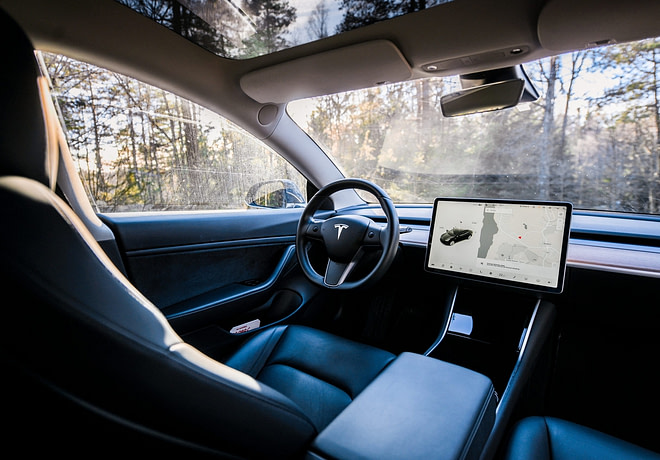Vegan interiors are one of those things that are too easily misunderstood. For many of us who are used to the idea of leather being the finest luxury finish in any car, mention a vegan interior and it’s too easy to imagine hemp roof lining, reed mats and vegetable-based upholstery. While veganism is more popular – and more fashionable than ever – a vegan interior still sounds like a scratchy unpleasantness that can only be improved with layers of cowhide.
The truth is very different. In fact, vegan interiors needn’t be pious or uncomfortable at all. They offer a broader range of finishes and textures than we enjoy in today’s mostly leather-bound interiors, using materials that tend to be far more sustainable and environmentally friendly than leather. More than that, the textile and natural materials used can also be practical, bright, durable and gorgeous to look at and live with.
To state the obvious, vegan interiors have to be totally animal-free, which can be hard to find given the prevalence of leather steering wheels and gear levers even in cheaper cars, not to mention animal-derived adhesives that are still commonly used.
It’s understandable, then, that demand for more environmentally sustainable, animal-product free interiors is growing fast, and thankfully the car industry is responding.
Polestar 2
The Polestar 2 is a compact, pure-electric executive car that rivals the Tesla Model 3 and BMW 3 Series. It was unveiled earlier this year, and four of its five interior options are vegan.
Ebba Maria Thunberg, Head of Colour and Materials at the Swedish brand, said that “textiles are lighter than leather and you can create many more different characters. It doesn´t have to be more expensive [to produce], either, but you need to develop a new look that is desirable in another way and perceived equally as well as traditional leather.”
Polestar is a high-end sister brand to Volvo, so has the advantage of being rooted in that unmistakable, light, airy, natural-feeling Scandi-chic design that lends itself to artfully-textured, muted textiles and bleached wood inserts.
It makes you want to run out and buy a chunky-knit fisherman’s jumper and lakeside lodge just being around a Volvo or Polestar. This distinctive character lends itself perfectly to ethically sourced, animal-free interior materials, so if any brand can conjure the “new, sustainable design language” that Thunberg spoke to One Woman Owner about, it’s Polestar.
Certainly, the tactile materials, black ash wood inserts and high-gloss contrasts in the Polestar look like a great place to start this new language.
Tesla Model 3 has vegan credentials
Polestar isn’t alone in demonstrating how leather-free interiors can look great. The new Tesla Model 3 is one of the first cars to go big with its vegan interior claims. Even the Model S and X (older Tesla models) have leather-free seats, but the steering wheel has been a problem since finding a tactile material that’s also durable and suitable for a heated steering wheel can be difficult. Tesla finally cracked the problem in 2019 with an all-vegan interior, steering wheel included.
Still, the American manufacturer isn’t shy of setting trends rather than following them, and it’s been proud and vocal about its fake leather interiors for many years – even if a fully vegan interior only just arrived with the Model 3. In fact, Tesla’s attitude is one of many that are seeing vegan interiors become truly desirable.
Ferrari, Bentley and Audi all either offer vegan alternatives or have spoken widely about it. Audi’s electric e-tron GT concept highlighted the company’s intentions to offer vegan finishes. It even features carpet made from Econyl yarn – a fibre produced from used fishing nets.
The Evoque
Jaguar Land Rover is also looking at more sustainable and vegan options. The Evoque features optional interiors including a wool-based textile called Kvadrat that also has a complimenting material made from 53 recycled plastic bottles, while the Eucalyptus interior uses textile made from plant fibres that are usefully light on water usage during growth.
And if there is any vehicle that screams fashion, it’s the Range Rover Evoque, which only proves further that vegan interiors don’t require style and comfort sacrifices. In fact, the best news for those who’d like to see less animal hide is that vegan is now cool. So even those who aren’t terribly moved by small issues like saving animals, the planet and humankind will almost certainly be swayed by fashion.
It’s worth adding that the leather-free interior isn’t a new thing and it doesn’t have to be a premium thing, either. Plenty of manufacturers offer upholstery finishes in cheaper models, but it’s the finer points of the adhesive and often that pesky leather steering wheel that means they can’t claim to be vegan.
As of 2020, the Renault ZOE electric car comes complete with upholstery made from recycled seatbelts and plastic bottles.
However, it’s a significant point to make that, while the interior of a car often sees the heaviest usage of animal-based materials, you do find animal products in the production processes of other parts of the car. Stearic acid, for instance, is mostly derived from animal-grade products and is routinely used in tyre production.
Of course, it’d be good to see more vegan interiors across the whole spectrum of cars from cheap to premium, but it’s still heartening to see them becoming such a hot topic. Not only because it’s proving that non-animal materials can offer such a broad palette of finishes and textures, but also because what’s posh and hip today tends to become the norm tomorrow.
As long as customer demand continues to grow at the rate it is now, and with almost every car brand talking about vegan options, the cruelty-free, environmentally sustainable interior looks set to become a welcome feature across the market.









Related articles